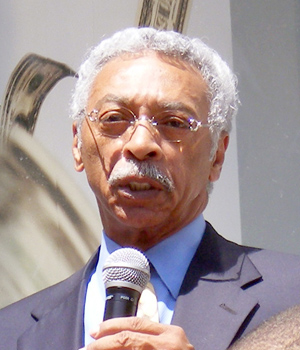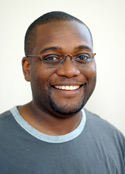Much has been said about Birmingham’s ample green space. And it is ample – more than, in fact. To put it simply, we love parks. Parks are a big deal here, and likely to get bigger when we start connecting them all, one to another. But that’s jumping ahead.
Birmingham is a very green city and region – literally. We are doing better these days in the environmental sense of the word also, but for just pure color, green is it in Birmingham. You couldn’t count the shades of green I can see out of my living room or office window. We are blessed with green trees (many of them pines), green shrubery, green-coated mountains and valleys, the underbrush is green (especially in the kudzu growing season), we’re blessed with acres and acres of green grass, green foliage. We even adore fried “green” tomatoes. Face it – we’re green!
Our tradition of dedicating parks to preserve all that green space dates back to the 1920s to the city’s decision to create a Birmingham Park and Recreation Board and to hire the noted Olmstead landscaping firm to create a plan for preserving and enhancing our many parks and open spaces. The firm had a notable track record even then, having developed plans for park space in cities such as Boston and Baltimore. Their recommendation was comprehensive and highly detailed, and you may read about the vision set forth in the Olmstead report in “The Olmstead Vision: Parks for Birmingham,” published by the Birmingham Historical Society in 2006.
At the core of the Olmstead vision was the idea of preserving green space along the streams that flowed through our valleys. In fact, the ridge and valley topography of the Birmingham region lent itself to this concept and is today why there is at least some park space preserved along the Shades Creek Greenway adjacent to Lakeshore Drive in Homewood. Similar plans are in place for greenways along Village Creek and Valley Creek and the preservation of land in the Turkey Creek watershed is continuing. The Olmstead report envisioned the set-aside of land around the creeks and the preservation of that land (and, thus, the preservation of the quality of the water as well).
The creation of some entirely new parks also has gained the public’s attention in recent years, stepped up dramatically in 2006 when United States Steel announced its largest corporate philanthropic gift ever. The steel company agreed to sell more than 2,000 acres of wooded land along the ridge of Red Mountain to a non-profit trust – and offered it at roughly a 50% discount to the appraised value of the land. In addition, U. S. Steel stroked a check in the amount of $1 million to help the park planners get started with their operations. Imagine park space larger than New York City’s Central Park connecting Birmingham to Bessemer along the ridge of Red Mountain where iron ore mines once fed the mills of Jones Valley.
In the city center, just south of the Morris Avenue railroad tracks, a smaller but equally strategic space has been dedicated as a park and preparation for construction is under way there. The Railroad Reservation Park will extend along the south side of the tracks at Morris Avenue two blocks to 2nd Avenue South and east-west between 18th and 14th streets. This park will feature grassy areas, a lake with paddle boats, walking paths and a pedestrian overpass from the park to the soon-to-be-built intermodal transit center on Morris Avenue.
In East Birmingham, the Ruffner Mountain Nature Preserve sits astride Ruffner Mountain – 1,100 acress of woodlands and trails criss-crossing the ridge of the mountain and connecting old mining sites. A new nature center is being constructed with federal funds and park supporters are raising additional funds to add a new 500-acre tract to the park’s holdings.
South of Birmingham is the large Oak Mountain State park, and to our West is Tannehill State Park. Dotted across our landscape are literally hundreds of smaller municipal and “pocket” parks.
In Pittsburgh a couple of years ago, some of us had an opportunity to learn about that city’s parks program and the “string of pearls” concept – an idea that’s also being implemented here. The idea is that parks exist to be enjoyed, and that perhaps linking the park or green spaces can amplify that enjoyment. Thus, a series of walking, hiking, biking trails has been developed (a la the Shades Creek Greenway) to connect the parks – as a string is used to connect pearls. A day can easily be envisioned when one could (if one wished) walk, run or hike from Tannehill State Park on the Tuscaloosa County line through the Red Mountain Park, along greenways to the Railroad Reservation Park, continuing on rail rights-of-way to Ruffner Mountain and, ultimately, on to Cheaha Mountain and the Appalachian Trail.
And why, exactly, is this important? Aside from the enjoyment a park offers, the enhancement of quality of life, the preservation of land and water quality and the general benefits to our health and well-being, setting aside parks and green spaces say something to us about the future. Taking these actions in the 1920s was a way for our forefathers to ensure the sustainability of the city and region while staking a claim to the economic growth that followed. Want a better economy? Build a park and improve people’s lives. Seems to me that the same equation works today, and as we preserve and enjoy the new spaces, we’re making a positive statement about the future we all hope to share in this really green place.
Barry Copeland is executive vice president of the Birmingham Regional Chamber of Commerce. Check out his blog over at Positively 20th Street, where this entry was originally posted on April 21.
 Could you imagine the conversations that would result from Birmingham’s mayor, Larry Langford, taking his ideas directly to the blogosphere? We had definitely thought of it and all of the possibilities – that’s why we offered him a chance to write a weekly column here on my Birmingham during the early days of his administration. We also tried to include him in the interviews that we conducted as part of our election coverage. We never received an official response from him on either of those invitations.
Could you imagine the conversations that would result from Birmingham’s mayor, Larry Langford, taking his ideas directly to the blogosphere? We had definitely thought of it and all of the possibilities – that’s why we offered him a chance to write a weekly column here on my Birmingham during the early days of his administration. We also tried to include him in the interviews that we conducted as part of our election coverage. We never received an official response from him on either of those invitations.




 The inboxes at The Terminal received several emails late yesterday afternoon, a couple of them including the responses received by two citizens after they sent in their concerns to Mayor Langford’s office about
The inboxes at The Terminal received several emails late yesterday afternoon, a couple of them including the responses received by two citizens after they sent in their concerns to Mayor Langford’s office about 

So, why WordCamp Birmingham?
If you’ve been to the front page of the site today, you’ve learned that we’re serving as an organizing sponsor for WordCamp Birmingham on September 27 & 28. A simple explanation of the event is it’s an unconference for fans, users and folks just interested in blogging in general and WordPress in particular. I’ll wait for you to check out the program’s website to learn more if you want to.
We know one question that may be running through your minds is “Why do this?”
This is my attempt to answer that question for you.
Some look at blogging as our new public access channels or a new form of talk radio. Blogging allows individuals to share of themselves (whether it’s their opinions, their photographs, or their favorite recipes) with anyone who cares to pay attention. Blogging is also social media, to me in its most visible form and tangible form. It is the sharing of ideas coupled with the ability to get feedback from those that either support or disagree with them. You can do it for the love of sharing your thoughts, a longing to change the world and to earn a living.
Selfishly, we here at The Terminal want more voices out there online. We want more people to share their thoughts and opinions about what’s going on in Birmingham and its metropolitan area in all of the ways available through social media. We want there to be a more complete virtual picture for folks who wonder just what’s going on in The Magic City. We want more folks comfortable with how blogging actually works. There’s no better way to do so than to bring together people from all over the region and potentially the world to learn from and share with each other. WordCamp Birmingham is a forum we believe that will allow us to do just that. It will give folks a peek into the world of social media in all of its forms, including ways to integrate many of these tools into a WordPress blog and finally answer that nagging question for many, regardless of what software you choose to use, “Why blog in the first place?”.
There have already been more than 20 of the unconferences held throughout the world, including San Francisco, CA (WordPress parent company Automattic‘s hometown); Birmingham, England; Cape Town, South Africa; and Dallas, Texas. All of these locations allowed for conversations to be held and collaboration and cooperation to be fostered. For those that may need to look at this more competitively, the week following our event, Raleigh-Durham, NC is scheduled to host one. We’ll also be slightly ahead of my hometown as New York’s first WordCamp will be held the day after RDU’s.
It is also a great weekend to showcase Birmingham to its visitors. The Sidewalk Moving Picture Festival will celebrate its 10th anniversary while the Taste of 4th Avenue Jazz Festival enjoys its fifth year of providing a musical interlude to jazz aficionados of the region. Folks that want to enjoy more music on Sunday can make their way up to Vulcan Park and enjoy the Vulcan After Tunes series in addition to breathtaking views of the city. This is not to forget that two incredible exhibits will be opening at the Birmingham Museum of Art that weekend, including the one featuring Leonardo Da Vinci.
For others we plan to give our visitors a chance to wander the city via a scavenger hunt and invite folks to talk about other ways that Birmingham in particular and the South in general can continue to connect and share their voices with each other and the rest of the world.
Registration is scheduled to open on Wednesday Thursday morning and space will be limited.
What can you do? We hope a few things – that you’ll join us for what we hope is the first of many ways that we can contribute to our community’s technological goals; that some of you will consider contacting me about sponsorship opportunities; that you’ll consider volunteering and help us publicize the conference. That you’ll consider presenting at the conference.
Have I at least made you interested in what’s going on? Good…
Send me a message with “wordcampbham” as the title to acnatta@gmail.com or andre@bhamterminal.com and we’ll go from there.
André Natta is the managing editor of The Terminal and one of the organizers for WordCamp Birmingham.
4 Comments
Posted in Commentary
Tagged AL, Alabama, Andre Natta, Birmingham, editorial, reasons, WordCamp Birmingham